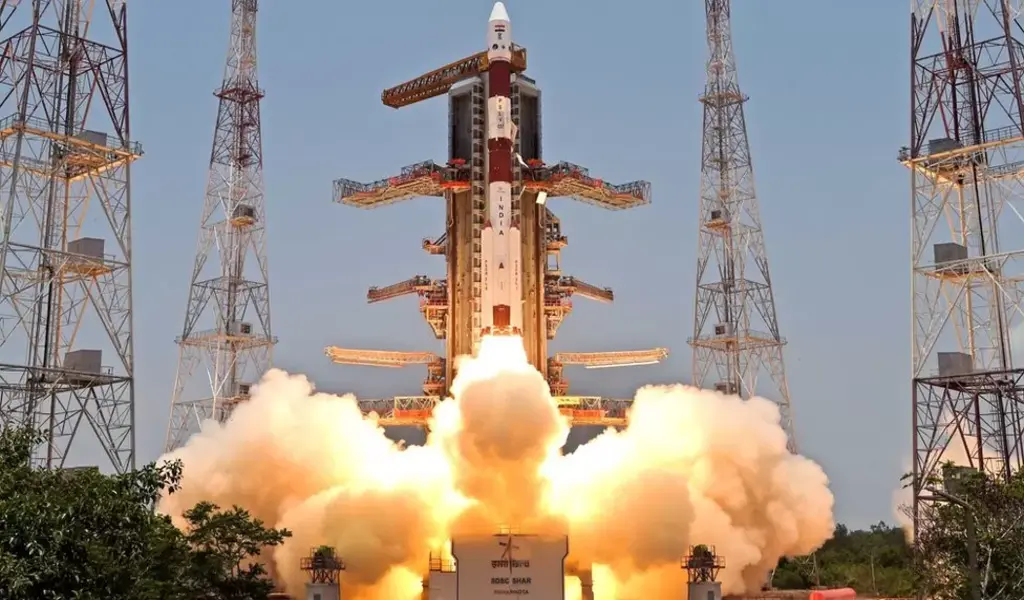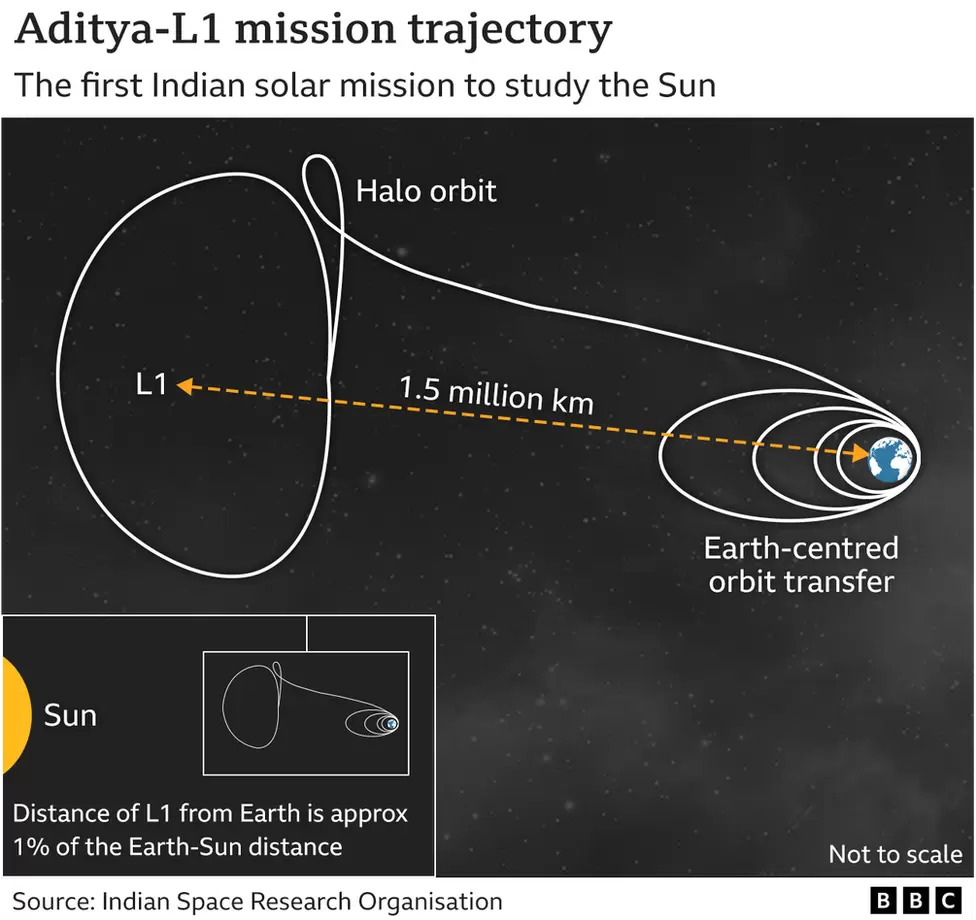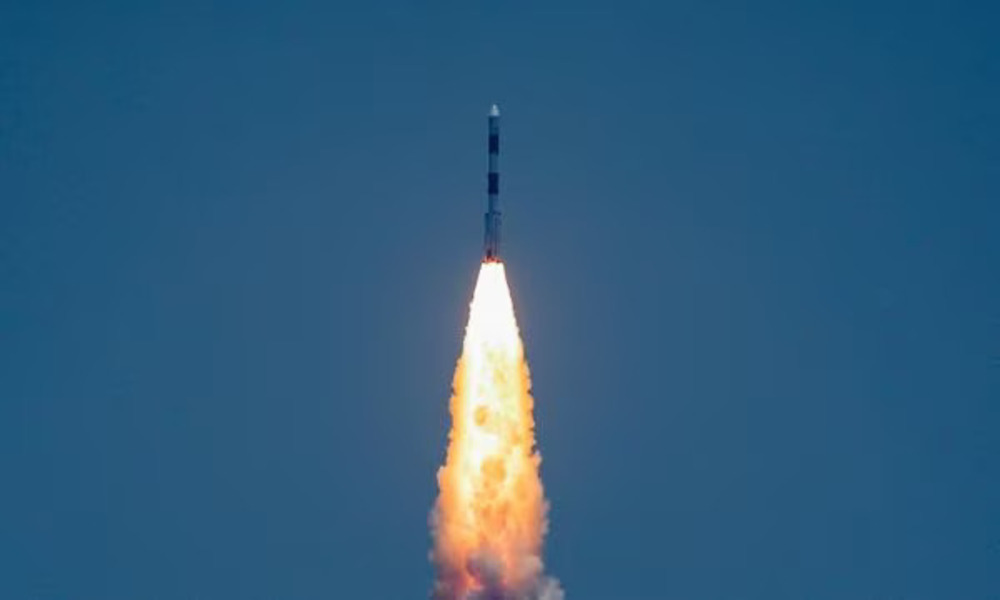News Asia
India Successfully Launches ‘Aditya-L1’: How Will ISRO’s New Endeavor Unravel Sun Mysteries?

(CTN NEWS) – India embarked on its maiden solar observation mission, Aditya-L1, mere days after a historic achievement as the first nation to successfully land a probe near the Moon’s southern pole.
Aditya-L1 commenced its journey from the Sriharikota launch pad at 11:50 local time in India (06:20 GMT).
This mission will traverse a distance of 1.5 million kilometers (approximately 932,000 miles) from Earth, constituting a mere 1% of the Earth-Sun distance.
The Indian Space Research Organisation (ISRO) anticipates that this voyage will span four months.
Named in homage to Surya, the Hindu deity representing the Sun, Aditya-L1 marks India’s premier foray into the realm of space-based exploration dedicated to studying our solar system’s most significant celestial body.
The “L1” in its title corresponds to “Lagrange point 1,” an exact location situated between the Sun and Earth where the gravitational forces of these two substantial celestial entities balance each other, thereby enabling a spacecraft to maintain a stable position, a phenomenon elucidated by the European Space Agency.
One intriguing question revolves around the extreme temperature of the Sun’s corona, which constitutes the outermost layer of the Sun’s atmosphere and is typically concealed by the intense brilliance of the Sun’s surface.
Ashoka University’s Vice-Chancellor and scientist, Somak Raychaudhury, articulated, “One of our primary objectives is to comprehend the remarkable heat of the Sun’s corona, which can reach temperatures as high as 2 million degrees.
This stands in stark contrast to the Sun’s comparatively cooler surface, which maintains temperatures around 5,000 degrees.” This insight was conveyed in a report by Hindustan Times.
In an exclusive interview with Hindustan Times, Somak Raychaudhury elaborated on the principal goals of India’s Solar mission.
He underscored how this mission will enhance India’s capacity to continuously monitor the Sun around the clock.
Somak remarked, “Our primary aspiration is to maintain uninterrupted Sun observation 24 hours a day. This is an achievement that cannot be realized from Earth’s orbit due to frequent obstruction by the planet.”
Main Objectives of the Aditya-L1 Mission:
The central aim of the Aditya L1 mission is to enhance India’s capacity to conduct continuous 24/7 solar observations. This unimpeded solar surveillance is vital for closely monitoring solar activity.
To achieve this objective, the Aditya L1 spacecraft is outfitted with two primary instruments, accompanied by an additional five smaller instruments.
Main Instruments on the Spacecraft: SUIT, VELC, and Five Others
The spacecraft’s key instruments include SUIT (Ultraviolet Imaging Telescope) and VELC, alongside five supplementary instruments. SUIT, functioning as an ultraviolet imager, is tasked with capturing uninterrupted images of the Sun.
The ultraviolet spectrum holds significant importance in these observations due to the substantial emission of ultraviolet and X-ray radiation from the Sun’s corona.
“Another significant instrument on board is VELC, which serves as a spectrograph specifically designed to study the Sun’s corona, the outermost layer of the Sun’s atmosphere.
Notably, the corona extends well beyond the visible disk of the Sun.
VELC will work in tandem with SUIT to monitor changes in the Sun’s corona, enabling ISRO scientists to correlate these changes with events occurring on the Sun’s surface.
Aditya L1 Mission: Unraveling the Sun’s Enigmas
Addressing the intriguing phenomenon of the Sun’s extremely high corona temperature, Somak elaborates that it can reach astonishing temperatures of up to 2 million degrees.
This stands in stark contrast to the Sun’s relatively cooler surface, which registers at around 5,000 degrees.
This significant temperature differential remains a perplexing mystery in the field of solar science, as Romak highlights in his interview with HT.
The study of high-energy phenomena on the Sun is expected to shed light on this enigma.
Aditya L1 marks a significant milestone for India, offering ISRO scientists the opportunity to establish causal connections between the Sun and its corona.
Furthermore, the observations made by Aditya L1 will contribute to bridging the gap between the Sun’s surface and the emission of high-energy particles during solar storms.
These storms are intricately linked to the Sun’s magnetic activity, as Romak emphasizes in his interview.
He also underscores the potential threat posed by these solar storms to human technologies, including satellites and communication systems.”
RELATED CTN NEWS:
Thailand’s King Commutes Thaksin Shinawatra’s Prison Sentence to One Year
U.S. Unemployment Benefit Applications Dip Amid Resilient Economy And Rising Interest Rates
Ann Napaporn, a Rising Star of Thai folk Music, was Killed in a Car Accident































